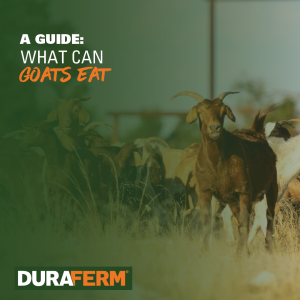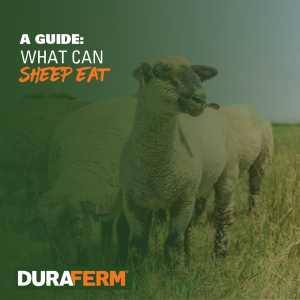
The arrival of babies should be one of the most anticipated times of the year. You’ve planned your matings, maintained the health and nutrition of the flock and herd and will be welcoming the arrival of new lambs and kids any day. Don’t let the excitement of lambing and kidding get dampened by scours!
Although management practices have vastly improved and evolved over time, scours or diarrhea is still the leading cause of death in neonatal (young) lambs and kids. Scours in lambs and goats are a complex, disease that can be caused by several factors, not limited to the environment, nutrition, and infectious agents. The four major causes of scours in lambs and kids during their first month of life are E. Coli, rotavirus, cryptosporidium parvum and salmonella.
E. Coli scours are the most common and are often associated with poor sanitation and dirty pens and environment. Lambing or kidding in a wet enclosed pen with soiled, dirty bedding that hasn’t been changed or assisting with birth with dirty chains or other dirty equipment are ways to introduce scours into your flock or herd.
E Coli scours usually will attack lambs and kids 1 to 4 days old but can occur any time the lambs are under 10 days old. This is also called “watery mouth,” since lambs salivate and have a cold mouth.
A second form of scours is the rotavirus scours, which usually hits the lambs and kids 2 to 14 days old. These small ruminants are infected with a group of B rotaviruses, where most other animals and humans are infected with group A rotaviruses. In addition to the diarrhea, lambs and kids become very depressed and dehydrated.
Cryptosporidium parvum is a protozoa that causes scours much like the rotavirus. Cryptosporidia can cause scours in lambs and kids 5 to 10 days old. Affected animals are often active, alert and nursing, but their diarrhea is very runny and yellow.
Prevention and Treatment
Preventing scours isn’t always 100% possible, but you can control scours using some best management practices prior to lambing and kidding. Make sure your ewes and does have all their prenatal vaccinations that they require, to help with passive immunity in the womb. Also, if weather permits, lamb or kid out in in an open pen where fresh air is abundant and there is not a build-up of waste, wet bedding or manure. If you need to lamb or kid inside due to weather or predator control, make sure your barn is clean. Be sure all pens have fresh bedding that is free of old waste, manure and urine. Make sure feeders and water buckets are clean and have been disinfected since the last group of animals have used them.
Once the new babies are born, be sure they nurse their mamas and receive that valuable colostrum within the first 12 hours of life. That will make a significant difference in if they suffer scours or not, since scours is often a result of dehydration. If your newborn lamb or kid is not properly nursing, make sure it gets some frozen colostrum or milk replacer as soon as possible.
If you suspect your neonatal lambs or kids have scours, remember, scours are often a sign of another sickness. It is best to get a treatment for them as soon as possible, since scours are the leading cause of death in these babies. The key to treatment is discovering what is wrong with the animal and keeping it hydrated in the meantime. While you are trying to keep it hydrated, you can specifically treat it with a scour medication like Pepto-Bismol that will line and coat the stomach and provide temporary relief until you can seek advice from your veterinarian for further treatment.
Finally, group lambs or kids of similar age groups together to help mitigate scours and keep them away from other groups. This will help prevent the transmission of scours from one contemporary group to the next, since scours typically hit at a younger age. And always, consult a veterinarian if you have questions or are unsure if you are dealing with scours.
Good nutrition can also help keep scours at bay. Prior to lambing or kidding, make sure your ewes or does are getting the vitamins and minerals they need with a product like the DuraFerm® Sheep Concept•Aid® Protein Tub or DuraFerm® Goat Concept•Aid® Protein Tub. These tubs contain balanced nutrients as well as increased levels of protein – 16% in the sheep and 20% in the goat – to help your ewes and does through lambing, kidding, lactation and breed-back. In addition, they contain Amaferm®, a precision prebiotic designed to enhance digestibility by amplifying nutrient supply for maximum performance. It is research-proven to increase the energy available to the animal resulting in more milk production as well as the ability to initiate and maintain pregnancy and fertility.
If your lambs or kids do get scours, also provide them with Vita Charge® Clench Gel while you are treating them. This gel provides livestock with ingredients that help to increase nutrient absorption to promote a normal, healthy stool.
Lambing and kidding means scours, but with a clean environment, good nutrition and plenty of fluids in your newborn babies, you can keep scours to a minimum. Keep the scours at bay with these best management practices and enjoy the best time of the season!

